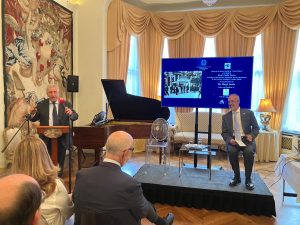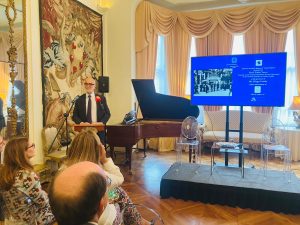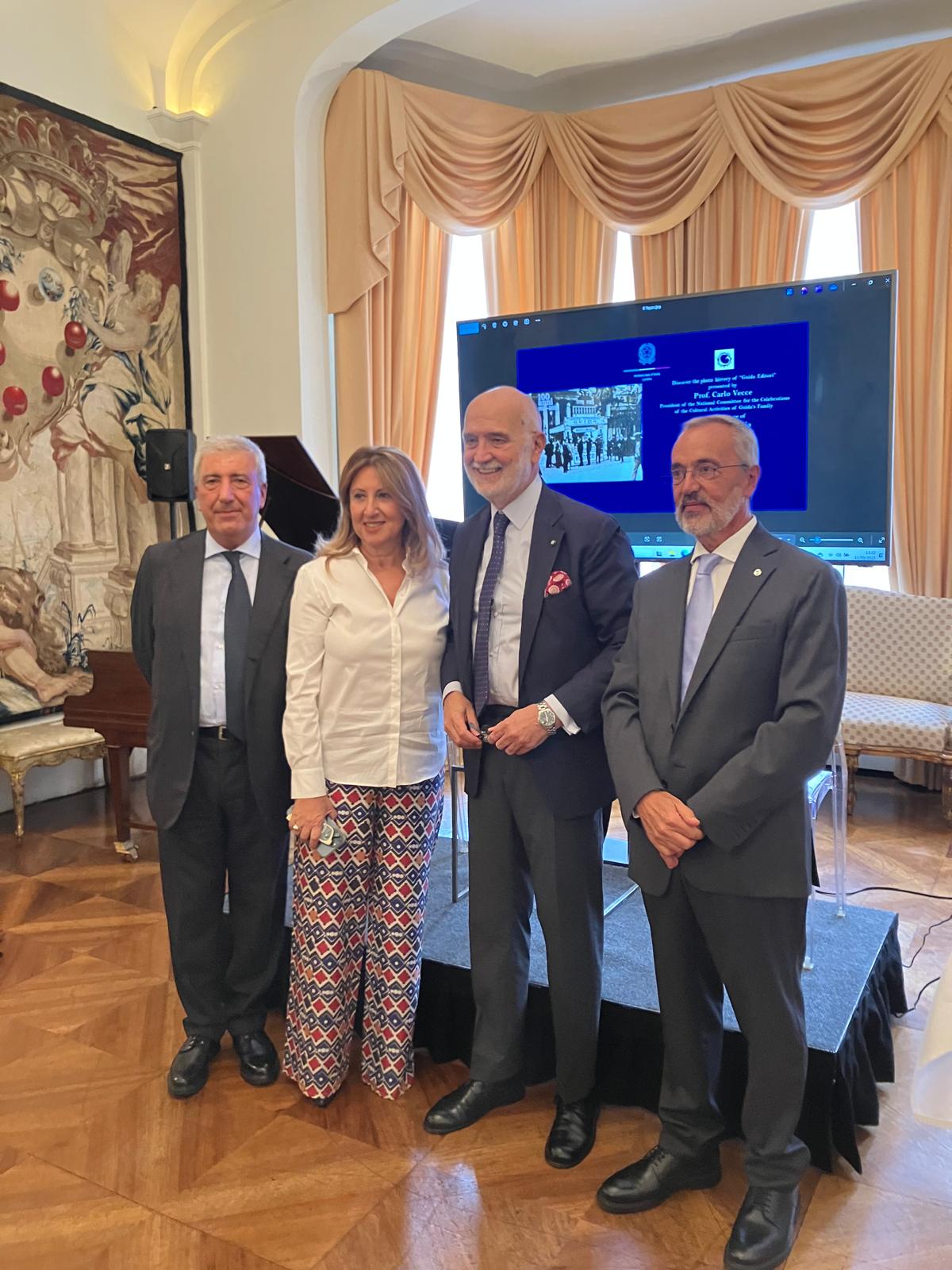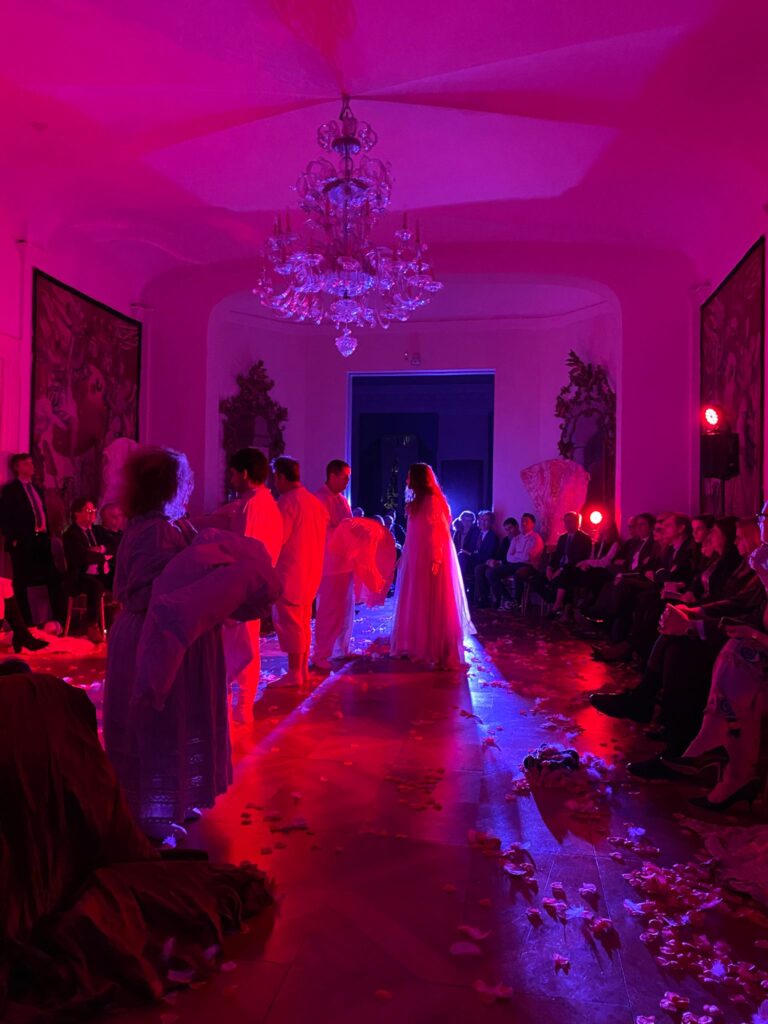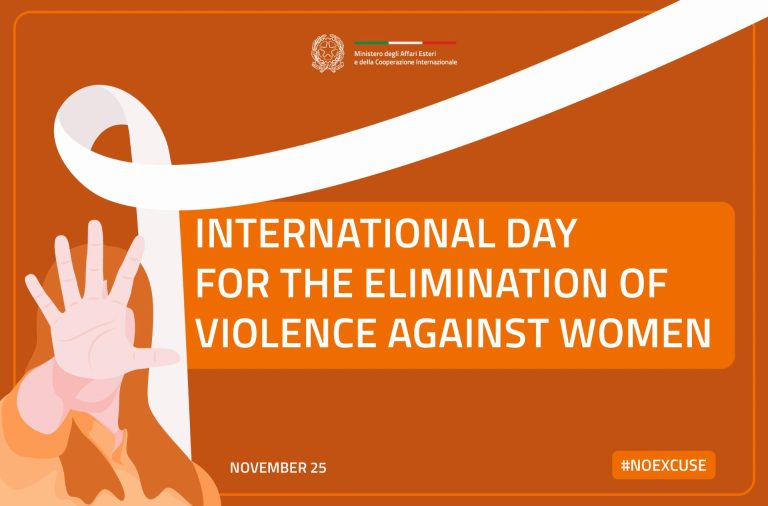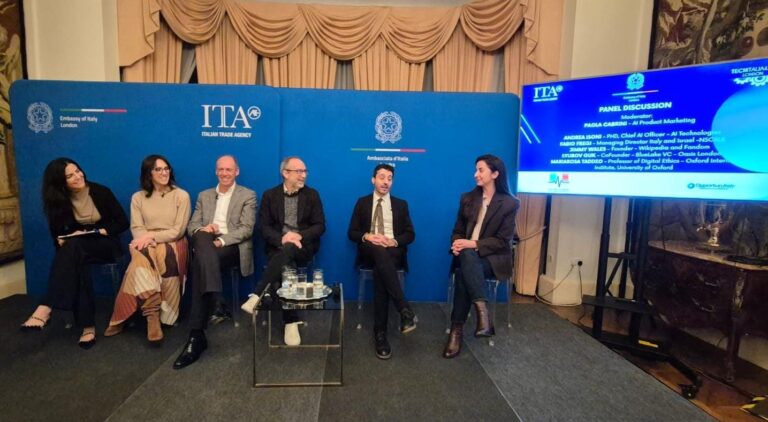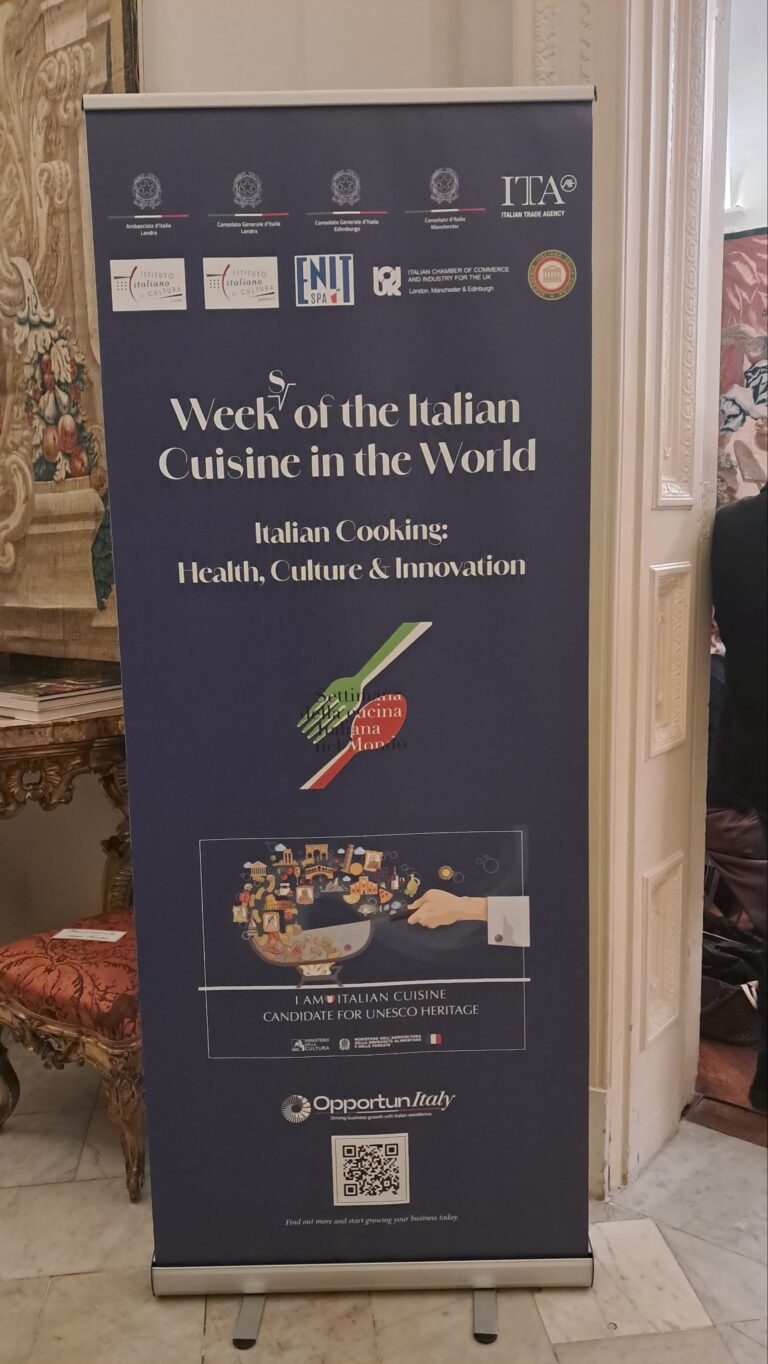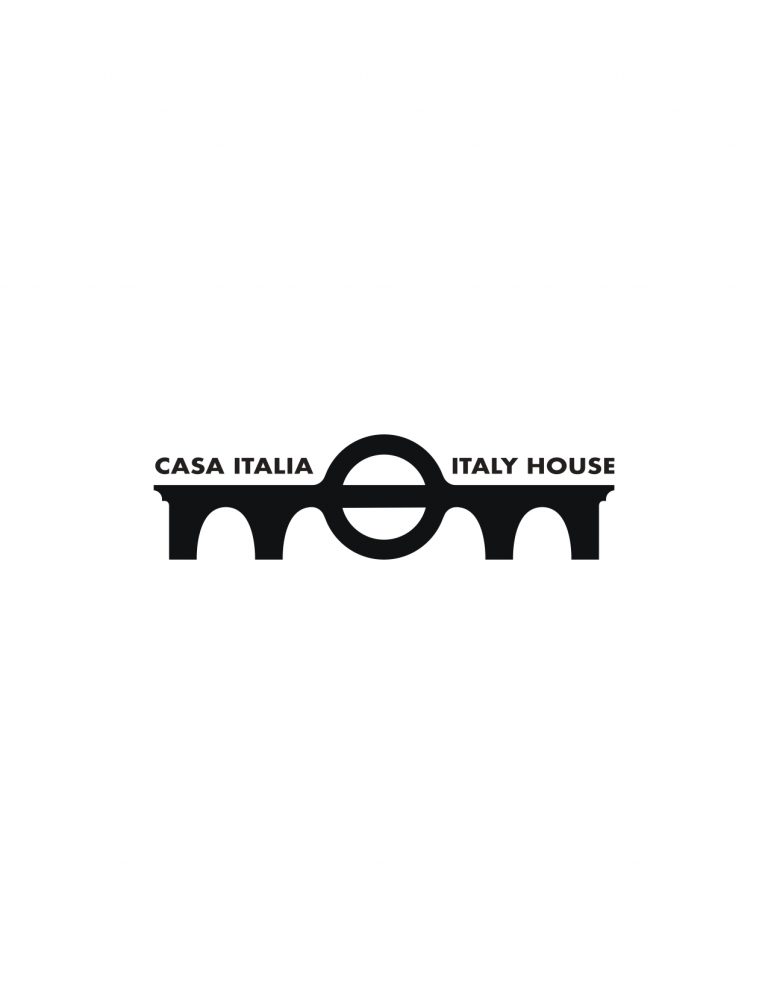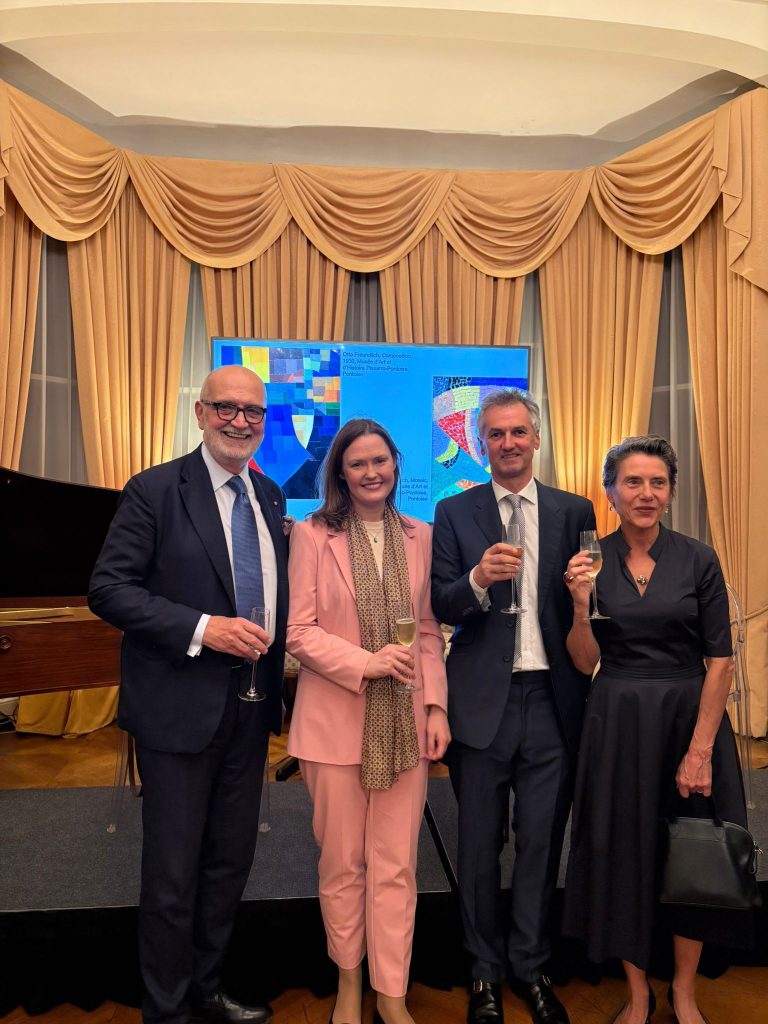London, September 11, 2025 – The Italian Embassy in London hosted the presentation of the photography exhibition “Centenary of the Guida Family’s Cultural Activities”, which will travel to several European cities. The event was introduced by the Italian Ambassador Inigo Lambertini, publisher Diego Guida, and the president of the national committee for the centenary celebrations, Carlo Vecce. The initiative, the first in a series of events marking the centenary of the Guida publishing house, will also take place in Italy, in Rome, Milan, and Naples. The exhibition will be structured in nine sections, each accompanied by period photographs and texts in both English and Italian.
“As a Neapolitan and an admirer of the works published by the Guida publishing house, I am particularly pleased that this traveling exhibition, telling the story of its hundred-year history, has been presented at the Embassy of Italy in London,” said Ambassador Inigo Lambertini, emphasising that Guida has been, and still is today, more than a century later, “a point of reference for intellectuals, writers, and artists—including Eugenio Montale, Alberto Moravia, Pier Paolo Pasolini, to name just a few—and a place where ideas take shape, and where Neapolitan culture intertwines with national and international culture.”
“Shortly after the First World War, in 1920, Alfredo Guida invested in a sector such publishing, no one believed in. Soon after, with the outbreak of the Second World War, the first censorship measures, and uncertain times, everything became even more difficult—but not impossible—confirming that culture sustains the construction of ideas and helps chart horizons of hope,” commented Diego Guida, CEO of Guida Editori and President of the Guida Foundation for Culture – ETS. “With pride, the company has now surpassed one hundred years of life; the Saletta Rossa circle of Guida, whose activities now continue in the space in Via Bisignano, remains a symbolic place for cultural events and initiatives open, as in the past, to intellectuals such as Jack Kerouac, Vittorio De Sica, Allen Ginsberg, Umberto Eco, Dominique Fernandez, Andrea Camilleri, Achille Bonito Oliva, Toni Servillo, Peppe Barra, Maurizio De Giovanni, and many others. From this tradition, further initiatives have also sprung up, such as the organization of book fairs and the reading promotion and social activities of the Guida Foundation for Culture – ETS,” concluded Guida, who represents the third generation of the publishing family.
“Our committee, established by the Ministry of Culture, aims to highlight, on the occasion of this centenary, the work of one of the most prestigious cultural and publishing institutions of 20th-century Naples: the Guida bookstore and publishing house,” explained Carlo Vecce, full professor of Italian Literature at the University L’Orientale of Naples and president of the National Committee for the Centenary Celebrations. “It seems extremely significant to me that the first major event we have organized—the presentation of this photographic exhibition—should take place here in London, at the Italian Embassy. An event that clearly underlines Guida’s international horizons throughout the 20th century, as well as the important civic and social role its cultural mission was able to play, even in the most difficult years of contemporary history—for Naples, for southern Italy, and for the entire country,” Prof. Vecce added.
Focus on the Centenary Committee
The committee is composed of Laura Cannavacciuolo, Vincenzo Caputo, and Mariolina Rascaglia, with the research group formed by Marco Borrelli, Margherita De Blasi, Alberto Scialò, and Sara Stifano.
Long neglected, the Guida family archive has in recent years been the subject of an initial effort of reorganization and cataloguing thanks to the determination of Diego Guida, promoter of the Centenary Celebrations of the founding of the Guida publishing house. He has brought together a committee of scholars and intellectuals active in the field of archival enhancement, entrusted with planning research and promotion initiatives of the Guida Collection. The substantial documentary nucleus, divided into two series—the publishing house (1929–1959) and the art gallery (1964–1968)—covers only a small part of the immense amount of material that makes up the publisher’s archive. Indeed, most of the documentation—correspondence, press clippings, iconographic material, drafts of published books—still lacks proper order and arrangement and will be the subject of further work to ensure its full value is recognized.
For further information, please contact: stampa.amblondra@esteri.it#
